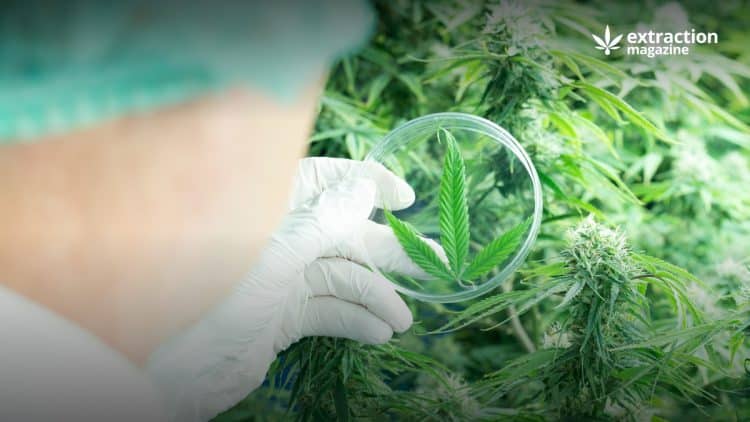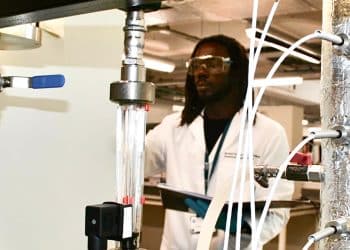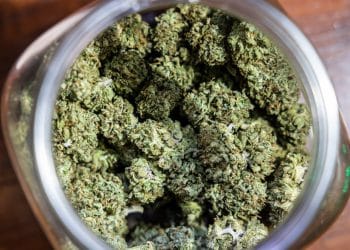Here you can find a selection of cannabis scientific studies published in the latest month. Each article is correlated with a short abstract describing the purpose of the study and the main research findings.
A great cannabis culture comes from great and peer reviewed sources! For this reason we believe in the importance of consulting reliable sources. Whether you are interested in a particular article don’t hesitate to read the full piece for more information.
Cannabis and analytical methods — Best New Findings
Development of a quick preparation method for the analysis of 11-nor-9-carboxy-∆9-tetrahydrocannabinol in human urine by phenylboronic-acid solid-phase extraction
This study provides a new preparation method for urine samples of cannabis users. The main tetrahydrocannabinol (THC) metabolite to detect is 11-nor-9-carboxy-∆9-tetrahydrocannabinol (THC-COOH) and this method offers an alternative to conventional, laborious and multistep sample preparation techniques. In order to perform gas-chromatography mass spectrometry (GC/MS) accurate quantification, it is necessary to perform a derivatization (silylation or methylation) of the cannabinoid metabolites.
This technique involves the glucuronidation of the THC metabolite THC-COOH (THC-COOGlu) and the solid-phase extraction (SPE) using phenylboronic-acid (PBA). This compound is a useful solid phase extraction media and it is capable of creating reversible covalent interactions between PBA and sample molecules.
Source: https://doi.org/10.1016/j.jpba.2023.115556
Characterization of Some “Hashish” Samples in the Egyptian Illicit Trafficking Market Using a Thermal Separation Probe and Gas Chromatography–Mass Spectrometry
This research focuses on the determination of the chemical makeup of some samples of Egyptian ash, coming from the illegal market. The analysis was performed using gas-chromatography mass spectrometry technique in conjunction with a thermal separation probe (TSP/GC/MS).
Many different terpenes and cannabinoids have been detected including isoaromadendrene epoxide, caryophyllene, and alloaromadendrene oxide, cannabiorcochromene (CBC-C1), tetrahydrocannabivarin (THCV), cannabichromene (CBC), cannabidiol (CBD), cannabielsoin (CBE), dronabinol (delta-9-THC), cannabigerol (CBG), and cannabinol (CBN). The phenotypic index that is the ratio between the percentages of THC plus CBN divided by the percentage of CBD (THC%+CBN% / CBD%) have been calculated in order to define the nature of the samples and the country of origin.
Source: https://pubs.acs.org/doi/full/10.1021/acsomega.3c02809
GC vs. HPLC in quantitation of CBD, CBG, ∆9-THC and CBN in plasma using different sample preparation methods
The aim of this study was to understand the divergence of the cannabinoids recovery degrees reported in literature using the same techniques. The recovery degree of the analyte by the sample preparation method and its quantitation are key factors influencing the sensitivity of the analytical procedure.
This research offers an extensive comparison of preparative procedures for the cannabinoid quantification in plasma samples using GC-MS and high-performance liquid chromatography paired with mass spectrometry (HPLC-MS). The analyzed preparative procedures in terms of efficiency and recovery degrees of a certain cannabinoid include protein precipitation, liquid-liquid extraction (LLE), QuEChERS and solid-phase extraction (SPE).
Source: https://doi.org/10.1016/j.jpba.2023.115563
Determination of phytocannabinoids in cannabis samples by ultrasound-assisted solid-liquid extraction and high-performance liquid chromatography with diode array detector analysis
The accurate determination of specific cannabinoids attained great importance due to the recent changes in cannabis control in many states. A reliable analytical methodology is crucial for the forensic, medical and recreational industry. Spiking cannabis products containing Δ8-tetrahydrocannabinol (THC) are an actual trend that require attention in order to include this cannabinoid in current analytical methods.
This study presents an ultrasound-assisted solid-liquid extraction followed by high-performance liquid chromatography with diode array detection (HPLC-DAD). This research demonstrates that this method can be included for routine analysis and a new solvent mixture is proposed in order to improve the method sensitivity, speed and extraction efficiency.
Source: https://doi.org/10.1016/j.chroma.2023.464191
Cannabis and Health — Best New Findings
Cannabis Use Disorder and Perioperative Complications
This cohort study analyzed 12 422 hospitalizations after major elective, noncardiac surgery from the 2016-2019 National Inpatient Sample database. The central question to answer was if cannabis use disorder is associated with increased risk of perioperative complications and in-hospital mortality after major surgeries.
Among the analyzed perioperative complications there are: , acute kidney injury, respiratory failure, myocardial ischemia, , stroke, , venous thromboembolism, hospital-acquired infection, and surgical procedure–related complications. This retrospective and population-based study highlighted that cannabis use disorder is associated with a modest increased risk of composite perioperative morbidity and mortality compared with hospitalization without cannabis use disorder.
Source: https://doi:10.1001/jamasurg.2023.2403
Impact of the introduction of medical cannabis in the UK on risk perception and recreational use of cannabis: A longitudinal and cross-sectional analysis
This study used data coming from longitudinal, cross-sectional components of an online survey investigating drug abuse and nightlife behaviors. The comparison was made between data coming before and after November 2018, when prescription cannabis was allowed in the UK for the treatment of certain medical conditions. The aim of the study was to understand if this change had an impact on the perception of risk among people and their recreational use of cannabis. However, no significant differences were highlighted, neither the use frequency pre and post policy change.
Source: https://doi.org/10.1177/20503245231168392
The moderating role of recreational substance use in the association of Mediterranean diet with academic performance among adolescents
This cross-sectional study analyzed a sample of 757 adolescents, self-responding for their recreational substance use including tobacco, alcohol and cannabis. Previous studies analyzed the relationship between the Mediterranean diet with academic performance among young people, highlighting that higher adherence to this diet was associated with greater academic performances. This study found that this relationship was moderated by the recreational use of substances.
Source: https://doi.org/10.1038/s41598-023-37529-8
Early Administration of the Phytocannabinoid Cannabidivarin Prevents the Neurobehavioral Abnormalities Associated With the Fmr1-Ko Mouse Model of Fragile X Syndrome
The administration of the cannabinoid cannabidivarin (CBDV) has been reported to be beneficial for potentially preventing neurodevelopmental disorders (NDD). This research reports the results about the CBDV treatment at different dosages and developmental stages on the Fmr1-knockout (Fmr1-KO) mouse model of Fragile X syndrome (FXS).
If CBDV is administered during adolescence, positive results in terms of prevention of cognitive, social and acoustic alterations of adult Fmr1-KO mice have been registered. In addition to that, the expression modification of various inflammatory brain markers have been also noticed. CBDV early administration could potentially prevent neurobehavioral alterations linked to FXS.
Source: https://doi.org/10.20944/preprints202307.0140.v1
Combining Noninvasive Brian Stimulation with Behavioral Pharmacology Methods to Study Mechanisms of Substance Use Disorder
This research focuses on the effects that tetrahydrocannabinol (THC), the main psychotropic constituent of Cannabis sativa L. can have on the brain employing neuroimaging-guided transcranial magnetic stimulation (TMS). TMS and psychotropic drugs have been extensively used to investigate the link between brain functions and behavior in humans. The impact of THC intoxication on cognitive function is evaluated through dorsolateral prefrontal cortex (DLPFC) stimulation including the subjective response to the psychotropic molecule.
Source: 10.3389/fnins.2023.1150109
Feasibility of a cannabidiol (CBD)-dominant cannabis based medicinal product (CBMP) for the treatment of Long COVID symptoms: A single arm open label feasibility trial
This study is a single arm open label feasibility trial of the tolerability and safety of a full-spectrum high cannabidiol (CBD) concentration cannabis-based medicinal product (CBMP).
Cannabis derived medicinal products have been shown great potential to treat various symptoms associated with long COVID including fatigue, sleep disturbances, pain, anxiety, cognitive dysfunction and depression. CBD-dominant CBMP appears as effective and well tolerated, even if larger studies have to be done in order to fully assess the efficacy of this treatment on long Covid induced symptoms.
Source: 10.22541/au.168849372.20263077/v1
Cannabis Growing and Technology _ Best New Findings
Utilization of hemp stalk as a potential resource for bioenergy
The goal of this study was to highlight the potential use as bioenergy resources of different clones of hemp. Physical properties, fixed carbon, volatile content, ash content, chemical composition, calorific value, ash composition, and metal element of the samples were investigated. From this research came out that hemp stalks possess the desired fuel characteristics and that particularly some clones could be used as raw material for bioenergy production.
Source: https://doi.org/10.1016/j.mset.2023.07.001
Plant-Parasitic Nematodes Associated with Cannabis sativain Florida
This research focuses on the collection of data to evaluate the interaction of hemp and plant-parasitic nematodes in Florida. Among many different nematode species, root-knot nematodes and reniform nematodes are among the primary obstacles to crop production in the world.
No significant changes in hemp production measured in different locations were associated with nematode soil populations. Nevertheless this is just an initial study and more research should be done to understand the long term impact that nematode rich soil could have on hemp production.
Source: https://doi.org/10.2478/jofnem-2023-0018
Hemp ( Cannabis sativa L.) Agronomic Practices, Engineering Properties, Bioactive Compounds and Utilization in Food Processing Industry
This study presents a review of the current knowledge regarding the agronomic practices for hemp cultivation, the plant morphology and engineering potential of hemp seeds together with the hemp processing technologies. The purpose of this article is to help researchers to evaluate the potential of hemp as functional food and hemp fibers as textiles raw material.
Source: https://doi.org/10.1002/9781119793007.ch5
Veterinary Use of Cannabis — Best New Findings
Pharmacokinetics, efficacy, and safety of cannabidiol in dogs: an update of current knowledge
In the last 5 years, cannabidiol (CBD) has been extensively used in veterinary medicine to treat a variety of conditions including skin lesions, anorexia, pain, epilepsy, among other health issues. This scientific review summarizes the effects of CBD and cannabidiolic acid (CBDA) on dogs and it reports data regarding the kinetic profile of these molecules.
Even if some studies report the beneficial effect of CBD on dogs therapy, further studies have to be done in order to assess with certainty CBD potential therapeutic effects.












